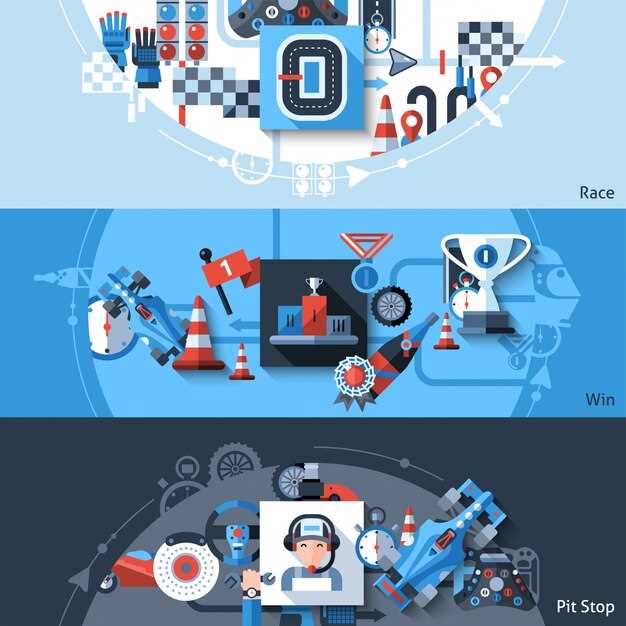
In the fast-paced world of competitive racing, the integration of telemetry has revolutionized the approach teams take to enhance performance and strategy. Telemetry involves the logging of critical data from various sensors on the vehicle, which allows teams to monitor real-time information such as speed, tire pressure, and engine temperature. This constant flow of data serves as a foundation for making informed decisions that can lead to a significant advantage on the racetrack.
The true power of telemetry lies in the subsequent analysis of the collected data. Teams can identify patterns and discrepancies in performance metrics, enabling them to optimize vehicle settings and driving techniques. By understanding how different variables influence speed and handling, teams can fine-tune their strategies for both qualifying and race day. This analytical approach not only improves vehicle performance but also enhances the skills of drivers through tailored feedback.
Ultimately, the impact of telemetry on competitive racing success cannot be overstated. As teams continue to leverage advanced data logging and analysis techniques, the advantage gained through precise, data-driven decisions becomes increasingly significant. In an environment where milliseconds can determine the outcome of a race, mastering the art of telemetry represents a crucial step toward achieving victory.
Utilizing Data Logging for Real-Time Performance Insights

Data logging is a crucial component in modern competitive racing, enabling teams to gain immediate insights into vehicle performance during a race. By monitoring various parameters such as speed, throttle position, tire temperature, and engine RPM, teams can assess how their car is performing on track in real-time. This information is collected continuously and stored for analysis, allowing engineers and drivers to make informed decisions quickly.
During a race, data logging systems capture critical information at high frequencies, often exceeding 100Hz. This enables teams to detect even the slightest changes in performance, whether due to track conditions, tire degradation, or mechanical issues. The analysis of this data can reveal trends and patterns that inform strategy adjustments, such as pit stop timing or tire management, helping teams to maximize their competitive edge.
Moreover, real-time data logging facilitates instant feedback for drivers, allowing them to understand how their driving style impacts the car’s performance. With this feedback, drivers can adapt their techniques during the race, enhancing their chances of achieving optimal lap times. By working closely with engineers to interpret the logged data, drivers can refine their approach to improve overall race performance.
In conclusion, data logging serves as a powerful tool in competitive racing, providing crucial real-time insights that help teams make strategic decisions and enhance performance during races. As technology continues to evolve, the sophistication and capabilities of data logging systems will only improve, further influencing the success of racing teams on the track.
Analyzing Race Data to Optimize Vehicle Setup and Strategy

In today’s competitive racing environment, the ability to analyze race data is crucial for success. Logging extensive telemetry during practice and race sessions provides teams with invaluable insights into vehicle performance. By capturing metrics such as tire temperature, brake pressure, engine RPM, and throttle position, teams can construct a comprehensive picture of how the vehicle operates under different conditions.
The analysis of this data allows engineers to identify patterns and correlations that directly influence vehicle dynamics. For instance, understanding how tire wear rates correlate with different driving styles can inform decisions on pit stop strategies and optimal lap times. By leveraging data analysis, teams can fine-tune car setup parameters, including suspension settings and aerodynamic configurations, to maximize grip and stability during races.
Moreover, race strategy can be significantly optimized through the interpretation of logged data. Historical race performance data can be compared with real-time telemetry to make informed decisions about when to push for speed or conserve energy. This enables teams to adapt their strategies based on current track conditions and competitor behavior, ensuring a competitive edge throughout the race.
Ultimately, continuous logging and analysis of race data foster a cycle of improvement that can lead to enhanced performance. As teams delve deeper into the intricacies of telemetry, they are better equipped to respond to the evolving challenges of each race, maximizing their chances of success on the track.
Integrating Telemetry Systems for Enhanced Driver Feedback and Training
Integrating telemetry systems into competitive racing is crucial for providing drivers with comprehensive feedback that significantly impacts their performance on the track. These systems collect vast amounts of data during races, including parameters such as speed, acceleration, braking force, and tire temperatures. By analyzing this data, teams can identify areas where drivers excel and where improvement is needed.
Effective integration of telemetry involves utilizing sophisticated software that translates raw data into meaningful insights. For example, utilizing graphical representations can help drivers visualize their performance metrics over multiple laps. This immediate feedback allows them to make real-time adjustments, enhancing their ability to respond to changing race conditions.
Moreover, regular analysis of telemetry data post-race is vital for driver training. Coaches and performance analysts can dissect the information to create tailored training programs. By focusing on specific skills such as cornering technique or throttle management, drivers can refine their abilities in a targeted manner. This systematic approach fosters a deeper understanding of both the car’s dynamics and personal driving style, driving overall success during races.
Additionally, telemetry systems can facilitate communication between the driver and the pit crew. Instantaneous feedback enables quicker decision-making, allowing teams to respond adeptly during critical moments within a race. This collaboration can be the difference between winning and losing, showcasing the pivotal role of telemetry in modern competitive racing.
